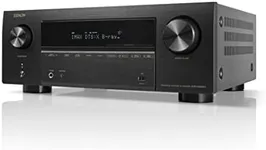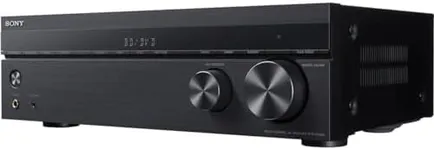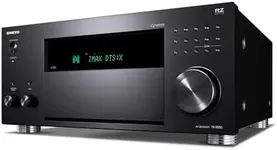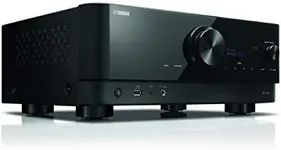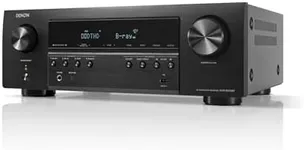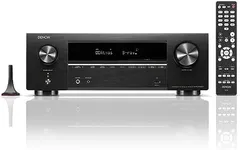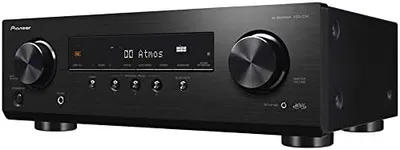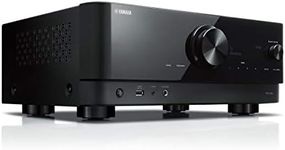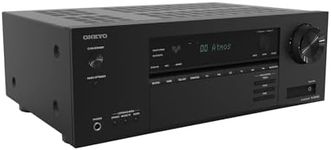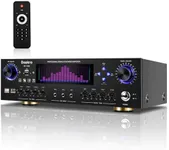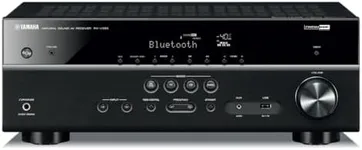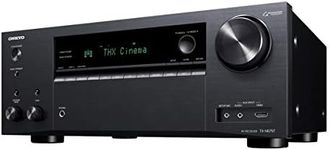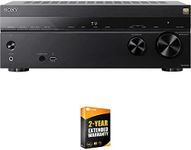Buying Guide for the Best 5 1 Av Receivers
Choosing the right 5.1 AV receiver can significantly enhance your home theater experience. A 5.1 AV receiver is designed to manage and amplify audio signals from various sources, delivering surround sound to your speakers. To make an informed decision, it's important to understand the key specifications and how they align with your needs. Here are the main specs to consider when selecting a 5.1 AV receiver.Power OutputPower output, measured in watts per channel, indicates how much power the receiver can deliver to each speaker. This spec is important because it affects the loudness and clarity of the sound. Generally, higher wattage means more powerful and dynamic sound. For small to medium-sized rooms, 50-100 watts per channel is usually sufficient. For larger rooms or if you prefer very loud sound, look for receivers with 100 watts per channel or more. Consider your room size and listening habits to determine the right power output for you.
Connectivity OptionsConnectivity options refer to the types and number of inputs and outputs available on the receiver. This is important because it determines how many and what types of devices you can connect, such as TVs, gaming consoles, Blu-ray players, and streaming devices. Common connections include HDMI, optical, coaxial, and analog inputs. Ensure the receiver has enough HDMI inputs for all your devices and consider future-proofing by choosing a model with more inputs than you currently need. Also, check for wireless connectivity options like Bluetooth and Wi-Fi if you plan to stream music or use smart home features.
Audio Decoding FormatsAudio decoding formats refer to the types of surround sound formats the receiver can process, such as Dolby Digital, DTS, and Dolby TrueHD. This spec is important because it affects the quality and type of surround sound you can experience. Basic models support standard formats like Dolby Digital and DTS, which are sufficient for most users. However, if you want the best audio experience, look for receivers that support advanced formats like Dolby TrueHD and DTS-HD Master Audio. Consider the content you typically watch and whether it uses these advanced formats to decide which decoding capabilities you need.
Room CalibrationRoom calibration is a feature that automatically adjusts the audio settings of the receiver to match the acoustics of your room. This is important because it ensures optimal sound quality regardless of your room's shape, size, or furniture placement. Receivers with room calibration use a microphone to measure sound characteristics and make adjustments accordingly. If you want the best possible sound without manually tweaking settings, look for a receiver with an advanced room calibration system. This feature is particularly useful in irregularly shaped rooms or spaces with lots of furniture.
User Interface and Ease of UseThe user interface and ease of use refer to how intuitive and user-friendly the receiver's controls and menus are. This is important because a complicated interface can make it difficult to set up and use the receiver. Look for models with clear, easy-to-navigate on-screen menus and well-labeled buttons. Some receivers also come with companion apps that allow you to control settings from your smartphone or tablet. If you're not tech-savvy or prefer a straightforward setup, prioritize receivers known for their simplicity and ease of use.
